- +30 213 003 7600
- +30 213 003 7600
- info@hellagrolip.rs
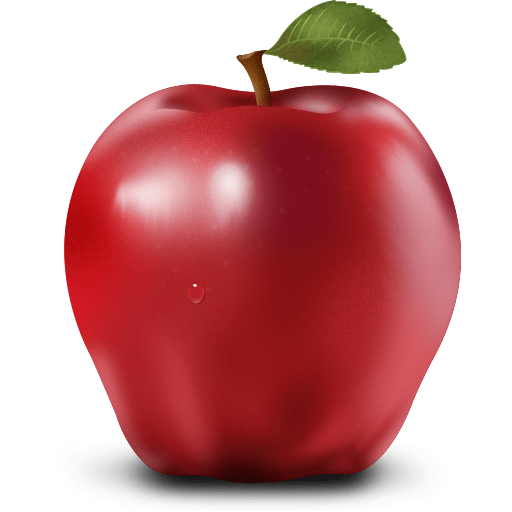
Apple trees thrive in a variety of soils, yet they adapt best in deep, fertile sandy loam soils, with good drainage and an adequate supply of Calcium. Their roots are sensitive to excessive water and the trees suffer in heavy soils which retain water. Regarding acidity, they favor slightly acidic to neutral soils (pH 6-6.8).
The apple tree is for humid and cold climates. It thrives in areas with annual rainfall of over 500mm, and it has the greatest requirement in cold of all deciduous fruit trees. It requires 800-1500 hours of low temperatures (under 7⁰C) in order to interrupt the dormancy of flower buds. Both climate and soil play a significant part in the yields and quality of the production. The highest yields are achieved in lowlands, while the best fruit quality in medium or high-altitude areas, with cold winters and cool summers (20-22⁰C).
It is a crop with high requirements in water. The stages with the highest requirements in water, where the positive effects of irrigation are evident, are the stage of fast vegetative growth (April-June) and the stage of size increase of the fruits (July-August). More than half of the total amount of water used for the irrigation of the orchard should be supplied during the summer months, so that the fruits grow and the apple tree orchard is cooled.
The goal of fertilization is to replace the fertilization units which are removed during harvest and pruning, as well as to cover the needs of the crop for sprouting, flowering, and fruit setting. The annual requirements of a tree in nutrients depend on its age, variety type, early ripeness, intended yields, and the soil and climate conditions of each area.
| Annual nutritional needs in kg/ha. | |||||
|---|---|---|---|---|---|
| Nitrogen
(N) |
Phosphorus
(P2O5) |
Potassium
(K2O) |
Calcium
(CaO) |
Magnesium
(MgO) |
|
| 140 – 200 | 80 – 120 | 180 – 250 | 160 – 220 | 30 – 60 | |

During the winter months, apple trees – as all deciduous trees – are dormant. During this time, the flower buds accumulate the hours of cold required and they become fully grown. The trees have no nutritional requirements at that time and, due to the low temperatures, the roots do not absorb water and nutrients from the soil until March, when bud flushing begins.

As the temperatures rise, the buds open and the first leaves flush at the base of the fruiting bodies, with the first flowers following shortly afterwards. At the same time, the root system of the tree is activated and starts absorbing nutrients and water.
During this time, the rate of nutrient uptake by the roots and the photosynthetic capacity of new leaves cannot sufficiently cover the increased nutritional requirements of flowering and fruit setting. In order for the trees to nourish the buds, the flowers, and the newly formed fruits, they mobilize the substances they had stored in their roots, trunk, and branches during the previous growing season.
At this developmental stage, the key nutrients are:
Nitrogen (Ν), which contributes to the tree breaking dormancy, supplies the buds and flowers with proteins, and boosts fertilization and fruit setting.
Phosphorus (Ρ), which contributes to the growth of the root system and the renewal of the root hairs, and provides the tree with the necessary energy for flowering and the structural elements for cell division in the new fruits.
Potassium (Κ), which participates in all metabolic reactions and regulates the water balance of the trees, and through it, the redistribution of the stored substances in the developing bodies.
When it comes to trace elements, Boron (Β) increases pollen germination and has a direct effect on fruit setting, while Zinc (Ζn) and Iron (Fe) play an important part in covering the needs of sprouting.

Flowering is followed by fruit setting and fruit growth, which is initially the result of cell division and then of cell elongation. The tree also forms its annual produce by June. The growing cycle usually concludes in June and the differentiation of the flower buds which will flower next spring begins.
At this stage, the trees exhibit their highest requirements in nutrients and water. Their requirements in Nitrogen (N) are greater now than at any other point of the annual cycle. Nitrogen supply, however, needs to be moderate so as to avoid excessive vegetative growth which antagonizes fruiting in the current year and undermines the formation of flower buds for the following year.
Phosphorus (Ρ), Boron (B) , and Calcium (Ca) are required in large quantities in order to cover fruit growth and the increased sprouting activity, while the requirements in Potassium (Κ) are high and progressively increase as the fruits grow.

uring the summer, the fruits increase in size and weight, while the shoots stop elongating and start accumulating dry matter and lignifying.
It is a period of lower requirements in Nitrogen (as it negatively affects the quality and storability of the fruits) and increased requirements in Potassium, which migrates from the leaves to the fruits and takes part in the production of storage substances for the following year.
Α limited Nitrogen supply, combined with an adequate amount of Potassium, increase the size of the fruits and improve their qualitative characteristics, and should therefore constitute a standard practice at this stage. Phosphorus is highly absorbable in August and it increases the weight and binding power of the fruits, while Calcium supply contributes to their storability after the harvest.

It is during this period when many nutrients, in the form of carbohydrates and amino-acids, migrate from the leaves to the trunk and the roots of the trees. These substances are vital to the normal course of sprouting and flowering the following spring.
Supplying the trees with Nitrogen, particularly through foliar application, increases the storage substances and contributes to robust growth and healthy fruiting in the following year.
Basing fertilization takes place towards the end of winter, before the activation of the root system, in order for slow nutrients (Ρ, Κ) to be exposed to winter rainfalls and be integrated in the soil. The goal is to promptly cover the increased needs of the trees after flowering, and even later on, during shoot and fruit growth.
The supply at this stage is:
As nutrient uptake by the root system has not fully begun or is very low during this time, the Nitrogen in basic fertilization should always be used in an Ammoniacal or Stabilized form, so that leaching is avoided and Nitrogen is available to the trees during fruit growth.
The use of stabilized fertilizers (NutrActive) is recommended, because they allow for a single application of basic fertilization and protect Nitrogen from leaching, as is the use of complex multi-nutrient fertilizers with nanopolymer technology (Ωmega fert), which prevent the immobilization of nutrients in the soil and keep them active and assimilated by the trees for a long time, fully meeting the requirements of vegetation, flowering and fruit development.
| Apple fertilizing | ||
|---|---|---|
| Type of Fertilizer | Stage of application | Dosage per tree |
NutrActive special 12-12-17 (+30) +2MgO +TE | Basic fertilization (Jan. – Feb.) | 1 – 3 kg |
* The dosages mentioned are indicative. Regarding the fertilizing of crops, one should take into account the advice of local agronomists.
The remaining 1/3 – 1/2 of the required Nitrogen (Ν) is supplied during the onset of flowering (in April for trees of moderate vivaciousness) or when fruit setting has finished (in May for vivacious trees), in order to cover the requirements for fruit growth and the formation of the annual vegetation.
In order to avoid excessive vegetation, which antagonizes fruiting, in early applications (Apr.), Ammoniacal or stabilized Ammoniacal Nitrogen form (Ωmega 26N – NutrActive) should be preferred, which provide Nitrogen to the trees in a balanced way and cover their needs for a long period of time.
When it comes to late applications (May), especially in acidic soils, you should opt for calcium fertilizers (SulfoCan – Nitrocan).
The remaining 1/3 of Potassium (Κ) is supplied during the stage of fast fruit growth, in order to cover their increase in size and weight as well as boost their qualitative characteristics (color, sugars).
A small amount of Nitrogen (20%) is supplied along with Potassium, which contributes to an increase in the fruit size and the production of storage substances for the following year, as well as an amount of Phosphorus (20%), which increases the weight and bonding power of the fruits and allows for their early ripeness.
ΣThe use of specialized compound fertilizers (Complefert) is recommended, as they provide harmonious nourishment to the trees during fruiting, and they boost the quantitative and qualitative characteristics of the production.
| Apple fertilizing | ||
|---|---|---|
| Type of Fertilizer | Stage of application | Dosage per tree |
NutrActive 27N 27-0-0 (+27) | Top-dressing (May – June) | 1 – 2 kg |
Complefert blue-star 12-12-17 (+30) +2MgO +TE | Summer (Jule) | 1 – 2 kg |
* The dosages mentioned are indicative. Regarding the fertilizing of crops, one should take into account the advice of local agronomists.
 (Jan. – Feb.) |
 (Apr. – May) |
 (Jule) |
|---|---|---|
| NutrActive® Ωmega fert® Complefert® Ωmega fert® Organofert® |
NutrActive® Novacan stabil® Fertammon® Nitrocan® |
Complefert® |
Basic fertilizers
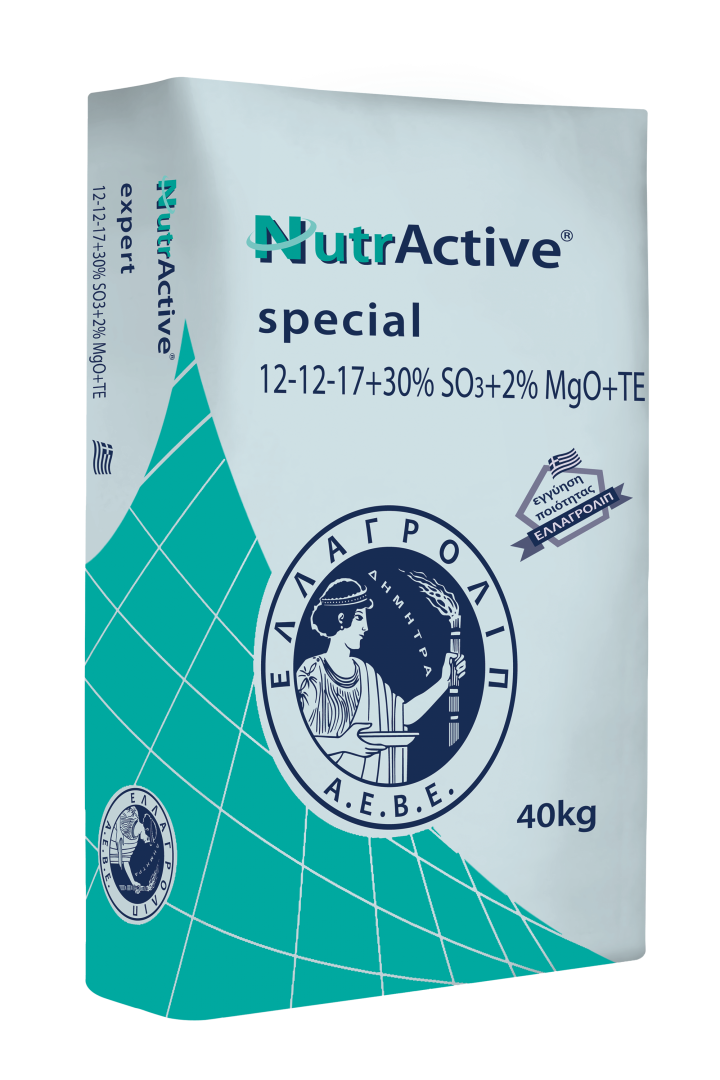
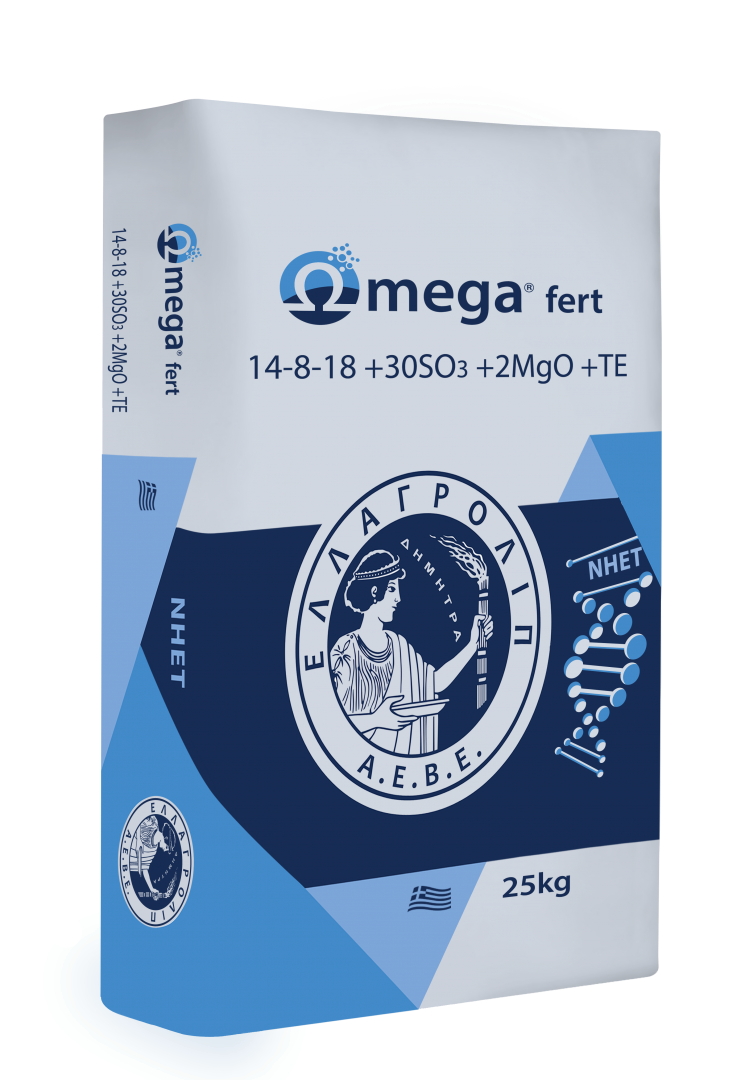
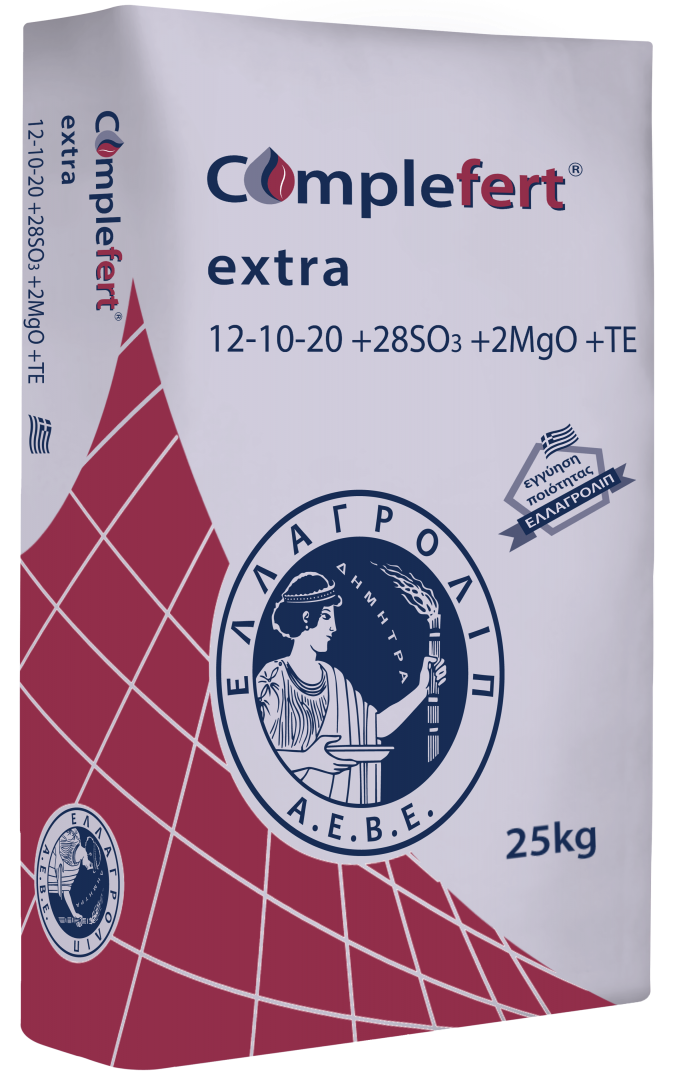
Top-dressing fertilizers
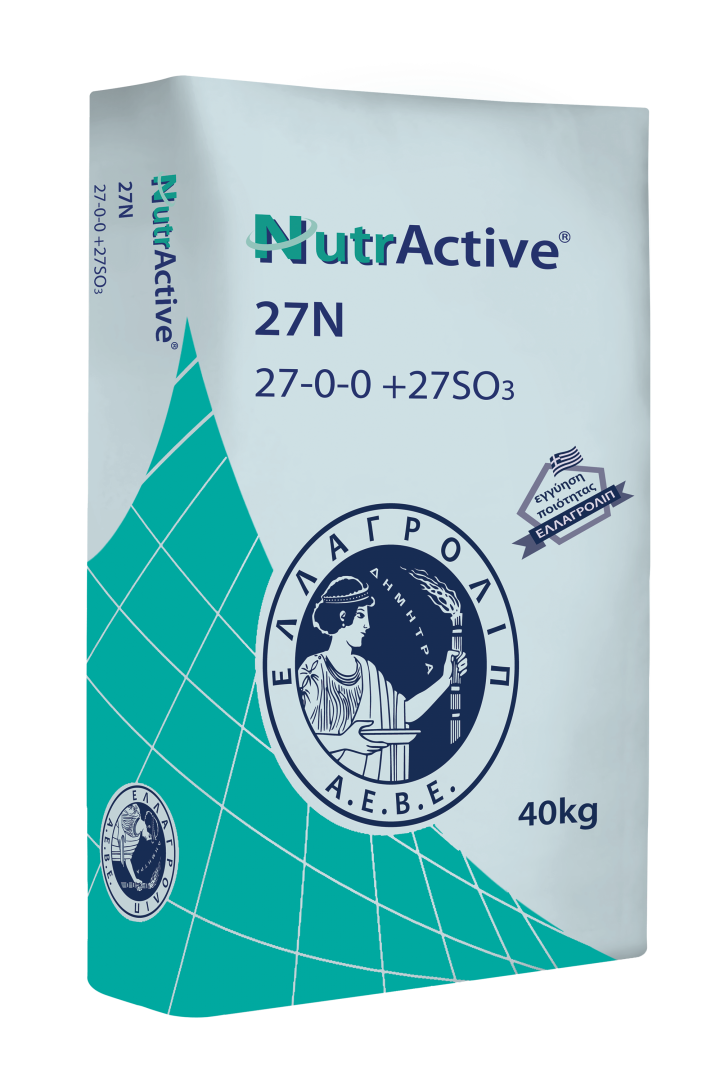
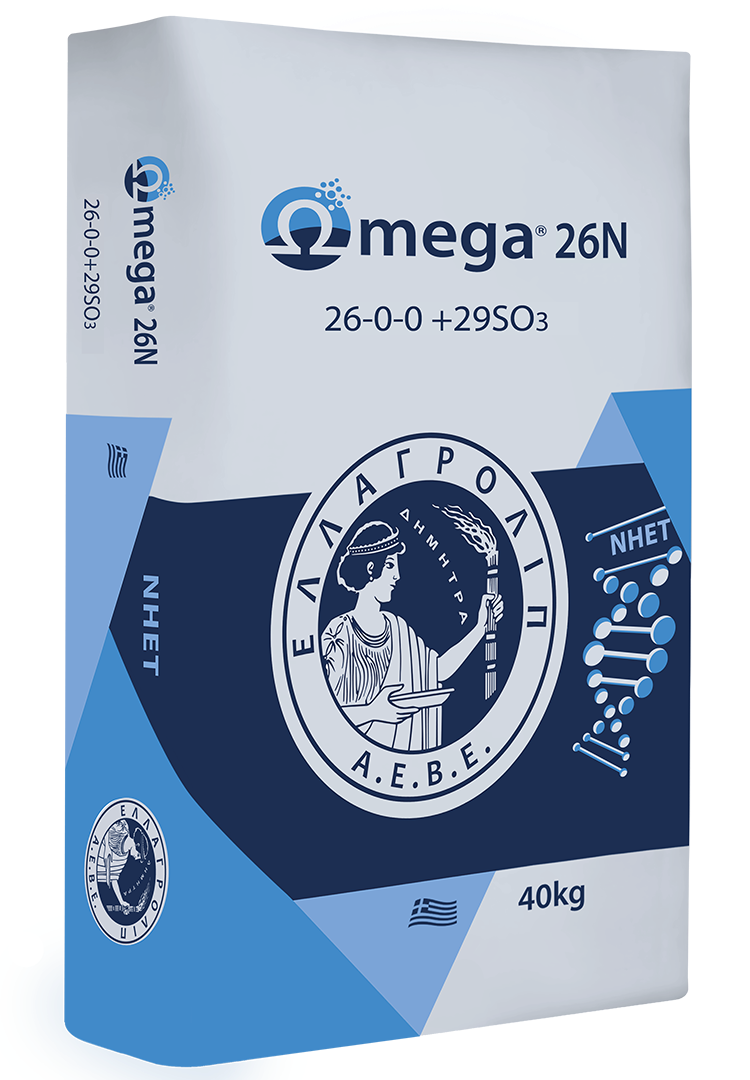
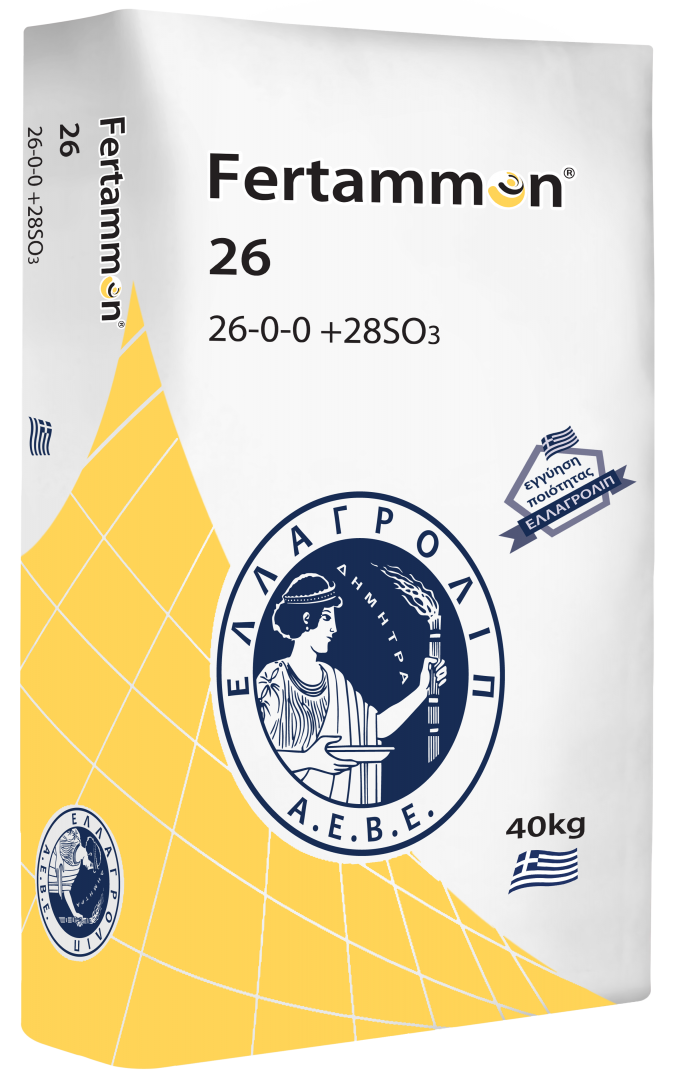
Apple trees thrive in a variety of soils, yet they adapt best in deep, fertile sandy loam soils, with good drainage and an adequate supply of Calcium. Their roots are sensitive to excessive water and the trees suffer in heavy soils which retain water. Regarding acidity, they favor slightly acidic to neutral soils (pH 6-6.8).
The apple tree is for humid and cold climates. It thrives in areas with annual rainfall of over 500mm, and it has the greatest requirement in cold of all deciduous fruit trees. It requires 800-1500 hours of low temperatures (under 7⁰C) in order to interrupt the dormancy of flower buds. Both climate and soil play a significant part in the yields and quality of the production. The highest yields are achieved in lowlands, while the best fruit quality in medium or high-altitude areas, with cold winters and cool summers (20-22⁰C).
It is a crop with high requirements in water. The stages with the highest requirements in water, where the positive effects of irrigation are evident, are the stage of fast vegetative growth (April-June) and the stage of size increase of the fruits (July-August). More than half of the total amount of water used for the irrigation of the orchard should be supplied during the summer months, so that the fruits grow and the apple tree orchard is cooled.
The goal of fertilization is to replace the fertilization units which are removed during harvest and pruning, as well as to cover the needs of the crop for sprouting, flowering, and fruit setting. The annual requirements of a tree in nutrients depend on its age, variety type, early ripeness, intended yields, and the soil and climate conditions of each area.
| Annual nutritional needs in kg/ha. | |||||
|---|---|---|---|---|---|
| Nitrogen
(N) |
Phosphorus
(P2O5) |
Potassium
(K2O) |
Calcium
(CaO) |
Magnesium
(MgO) |
|
| 140 – 200 | 80 – 120 | 180 – 250 | 160 – 220 | 30 – 60 | |

During the winter months, apple trees – as all deciduous trees – are dormant. During this time, the flower buds accumulate the hours of cold required and they become fully grown. The trees have no nutritional requirements at that time and, due to the low temperatures, the roots do not absorb water and nutrients from the soil until March, when bud flushing begins.

As the temperatures rise, the buds open and the first leaves flush at the base of the fruiting bodies, with the first flowers following shortly afterwards. At the same time, the root system of the tree is activated and starts absorbing nutrients and water.
During this time, the rate of nutrient uptake by the roots and the photosynthetic capacity of new leaves cannot sufficiently cover the increased nutritional requirements of flowering and fruit setting. In order for the trees to nourish the buds, the flowers, and the newly formed fruits, they mobilize the substances they had stored in their roots, trunk, and branches during the previous growing season.
At this developmental stage, the key nutrients are:
Nitrogen (Ν), which contributes to the tree breaking dormancy, supplies the buds and flowers with proteins, and boosts fertilization and fruit setting.
Phosphorus (Ρ), which contributes to the growth of the root system and the renewal of the root hairs, and provides the tree with the necessary energy for flowering and the structural elements for cell division in the new fruits.
Potassium (Κ), which participates in all metabolic reactions and regulates the water balance of the trees, and through it, the redistribution of the stored substances in the developing bodies.
When it comes to trace elements, Boron (Β) increases pollen germination and has a direct effect on fruit setting, while Zinc (Ζn) and Iron (Fe) play an important part in covering the needs of sprouting.

Flowering is followed by fruit setting and fruit growth, which is initially the result of cell division and then of cell elongation. The tree also forms its annual produce by June. The growing cycle usually concludes in June and the differentiation of the flower buds which will flower next spring begins.
At this stage, the trees exhibit their highest requirements in nutrients and water. Their requirements in Nitrogen (N) are greater now than at any other point of the annual cycle. Nitrogen supply, however, needs to be moderate so as to avoid excessive vegetative growth which antagonizes fruiting in the current year and undermines the formation of flower buds for the following year.
Phosphorus (Ρ), Boron (B) , and Calcium (Ca) are required in large quantities in order to cover fruit growth and the increased sprouting activity, while the requirements in Potassium (Κ) are high and progressively increase as the fruits grow.

uring the summer, the fruits increase in size and weight, while the shoots stop elongating and start accumulating dry matter and lignifying.
It is a period of lower requirements in Nitrogen (as it negatively affects the quality and storability of the fruits) and increased requirements in Potassium, which migrates from the leaves to the fruits and takes part in the production of storage substances for the following year.
Α limited Nitrogen supply, combined with an adequate amount of Potassium, increase the size of the fruits and improve their qualitative characteristics, and should therefore constitute a standard practice at this stage. Phosphorus is highly absorbable in August and it increases the weight and binding power of the fruits, while Calcium supply contributes to their storability after the harvest.

It is during this period when many nutrients, in the form of carbohydrates and amino-acids, migrate from the leaves to the trunk and the roots of the trees. These substances are vital to the normal course of sprouting and flowering the following spring.
Supplying the trees with Nitrogen, particularly through foliar application, increases the storage substances and contributes to robust growth and healthy fruiting in the following year.
Basing fertilization takes place towards the end of winter, before the activation of the root system, in order for slow nutrients (Ρ, Κ) to be exposed to winter rainfalls and be integrated in the soil. The goal is to promptly cover the increased needs of the trees after flowering, and even later on, during shoot and fruit growth.
The supply at this stage is:
As nutrient uptake by the root system has not fully begun or is very low during this time, the Nitrogen in basic fertilization should always be used in an Ammoniacal or Stabilized form, so that leaching is avoided and Nitrogen is available to the trees during fruit growth.
The use of stabilized fertilizers (NutrActive) is recommended, because they allow for a single application of basic fertilization and protect Nitrogen from leaching, as is the use of complex multi-nutrient fertilizers with nanopolymer technology (Ωmega fert), which prevent the immobilization of nutrients in the soil and keep them active and assimilated by the trees for a long time, fully meeting the requirements of vegetation, flowering and fruit development.
| Apple fertilizing | ||
|---|---|---|
| Type of Fertilizer | Stage of application | Dosage per tree |
NutrActive special 12-12-17 (+30) +2MgO +TE | Basic fertilization (Jan. – Feb.) | 1 – 3 kg |
* The dosages mentioned are indicative. Regarding the fertilizing of crops, one should take into account the advice of local agronomists.
The remaining 1/3 – 1/2 of the required Nitrogen (Ν) is supplied during the onset of flowering (in April for trees of moderate vivaciousness) or when fruit setting has finished (in May for vivacious trees), in order to cover the requirements for fruit growth and the formation of the annual vegetation.
In order to avoid excessive vegetation, which antagonizes fruiting, in early applications (Apr.), Ammoniacal or stabilized Ammoniacal Nitrogen form (Ωmega 26N – NutrActive) should be preferred, which provide Nitrogen to the trees in a balanced way and cover their needs for a long period of time.
When it comes to late applications (May), especially in acidic soils, you should opt for calcium fertilizers (SulfoCan – Nitrocan).
The remaining 1/3 of Potassium (Κ) is supplied during the stage of fast fruit growth, in order to cover their increase in size and weight as well as boost their qualitative characteristics (color, sugars).
A small amount of Nitrogen (20%) is supplied along with Potassium, which contributes to an increase in the fruit size and the production of storage substances for the following year, as well as an amount of Phosphorus (20%), which increases the weight and bonding power of the fruits and allows for their early ripeness.
ΣThe use of specialized compound fertilizers (Complefert) is recommended, as they provide harmonious nourishment to the trees during fruiting, and they boost the quantitative and qualitative characteristics of the production.
| Apple fertilizing | ||
|---|---|---|
| Type of Fertilizer | Stage of application | Dosage per tree |
NutrActive 27N 27-0-0 (+27) | Top-dressing (May – June) | 1 – 2 kg |
Complefert blue-star 12-12-17 (+30) +2MgO +TE | Summer (Jule) | 1 – 2 kg |
* The dosages mentioned are indicative. Regarding the fertilizing of crops, one should take into account the advice of local agronomists.
 (Jan. – Feb.) |
 (Apr. – May) |
 (Jule) |
|---|---|---|
| NutrActive® Ωmega fert® Complefert® Ωmega fert® Organofert® |
NutrActive® Novacan stabil® Fertammon® Nitrocan® |
Complefert® |
Basic fertilizers



Top-dressing fertilizers



